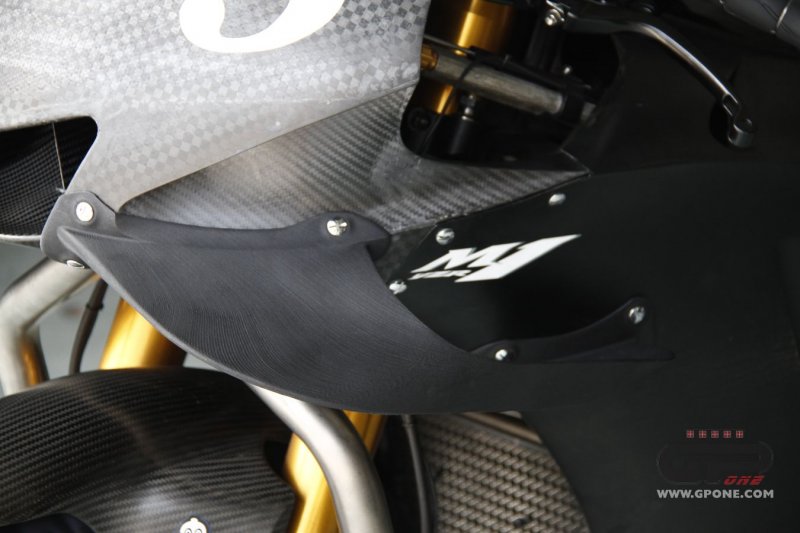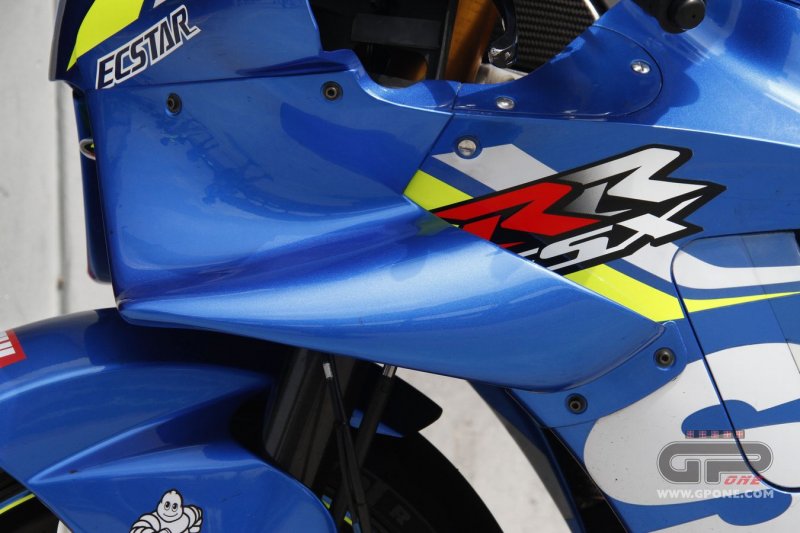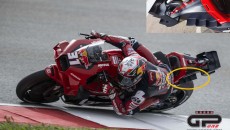Just when the topic of the hazards of the winglets seemed to have put to bed with the Ducati solution introduced last year that had ‘ducted’ winglets, in Sepang, all the new MotoGP bikes had brand new aerodynamic solutions that pushed the envelope far beyond Gigi Dall’Igna’s creativity.
In all actuality, at first glance it appeared that some teams had not done any studying at all, simply connecting the winglets to the bike fairing with a strip in order to minimise the negative effect of the aerodynamic ‘drag’, losing speed on the straights, in the meantime recovering the lost downforce.
Considering all the discussion on safety, it would be impossible not to point out that, if the wings could detach following slight impact before, now, with the new proposals, they most likely would not since they are secured rather solidly to the fairing. This is a clear indication that the rule was either poorly applied or that it is incomplete.

“After a request made by FIM, the riders discussed the topic in Safety Commission - explains Corrado Cecchinelli, Director of Technologies for the World Grand Prix Motorcycle Racing Championship, a role that he has held for several years after many wins with Ducati - so two measures were decided with part of the rule being rewritten. The first has to do with safety: it was decided to specify that on the bikes, there could be no forms on the outside of the fairing with the risk of the riders snagging on one another. The second has to do with containing costs and it consisted in a limitation of the previous almost complete aerodynamic freedom.
In Malaysia we saw all kinds of shapes: Ducati boxed their wings, Suzuki turned them upside down and Yamaha added some simple strips to get around the rule. Even Honda adopted a solution, albeit more sophisticated.
Since we were on site, we asked and received confirmation that, for example, the Yamaha spoilers have been approved. By whom, you ask?
Let us remind you: every fairing must be approved individually by Danny Aldridge, and two fairings per year can be homologated for each individual rider.
Cecchinelli analyses the logic of the manufacturers during the design and construction phase.

“Almost all the manufacturers decided to box the wings - he explains - creating closed structures. Inside the boxing, some inserted additional spoilers in order to achieve the greatest possible downforce. We should point out that the technical rule does not ban lateral strips that join the winglets to the surface of the fairing.”
As in Formula 1, interpretation skills push the envelope of the limits permitted by the rule itself. Corrado reveals the protocol that checks any irregularities.

“The technical director must judge and decide on the final design, check the safety aspect. The problem is the weight of how subjective this judgement is. There are no mathematical criteria and no written numbers. The shapes are now less dangerous than they were in the past, but in our opinion, not safe enough. Therefore, the measure having to do with safety proved to be weak, because it is subject to a subjective final judgement. The measure having to do with containing costs is also weak: the possibility of removing material from the fairing was interpreted by the manufacturers as freedom, with the consequence of constructing the fairing in several pieces. Basically, they produced many different interchangeable pieces so they can change the configuration depending on the needs of the moment.”

At this point, clearly a rule change is once again in order.
“The 2019 proposal will need to reinforce both topics - emphasises Cecchinelli - For the issue of safety, there will be items that will prohibit some shapes and that will introduce numbers in terms of the permitted angles as possible sources of danger. We will write down some numbers that describe well defined shapes. For the issue of costs, we will also introduce a paragraph that imposes, even with fairings made up of several pieces, only one evolution per year. I should add that we are not against aerodynamic studies aimed at achieving greater downforce force on the bike, but as long as the manufacturers continue to make fairings that improve aerodynamics and safety, also maintaining reasonable costs.”
(with the collaboration of Mirko Colombi)









